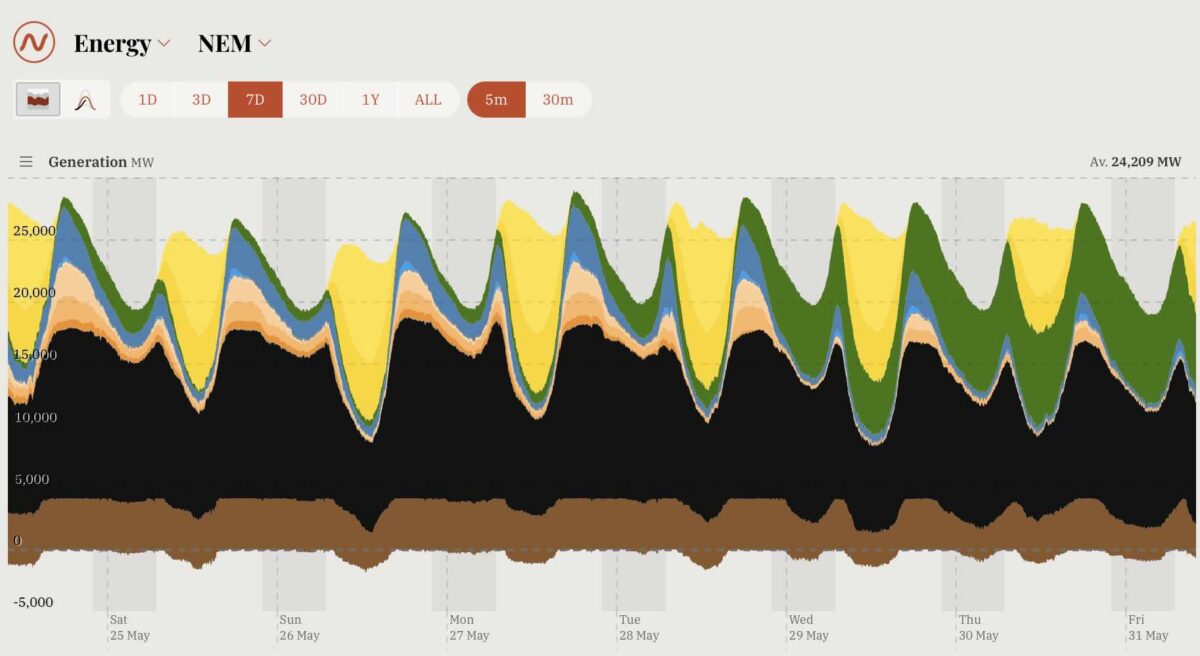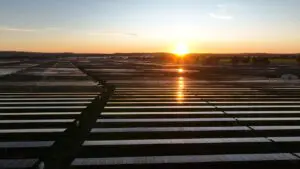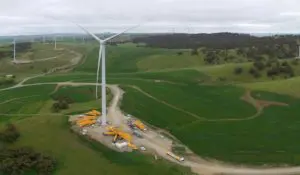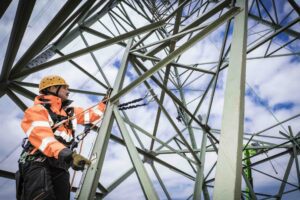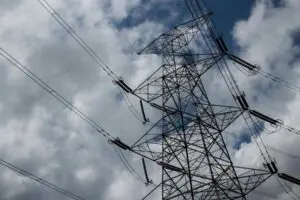There has been a fair bit of discussion in energy conversations, on and off line, over the last couple of weeks about the so-called “wind drought” experienced by the southern states on Australia’s main grid at times over the past month.
The latest and deepest drought was broken in spectacular style on Wednesday and Thursday, with wind energy setting a new instantaneous output record of 8,430.7 megawatts (MW) at 9.05pm (AEST) on Thursday evening. That beat the previous record set last July by around 300 MW.
This variability presents a good opportunity to focus on what that might mean for the country’s storage needs, particularly in light of the latest review by the NSW government, which has released modelling showing that shorter duration batteries might be more cost effective than long duration battery storage.
Fortunately, we have a real live model that can answer some of those questions, courtesy of Windlab engineer David Osmond, who has been running a weekly simulation for almost three years that assumes that the country’s wind and solar generation is scaled up to meet an average 105 per cent of annual demand.
But what about the shortfalls in weeks like this, when wind generation is about 50 per cent below average, and solar has also been producing below its average output?
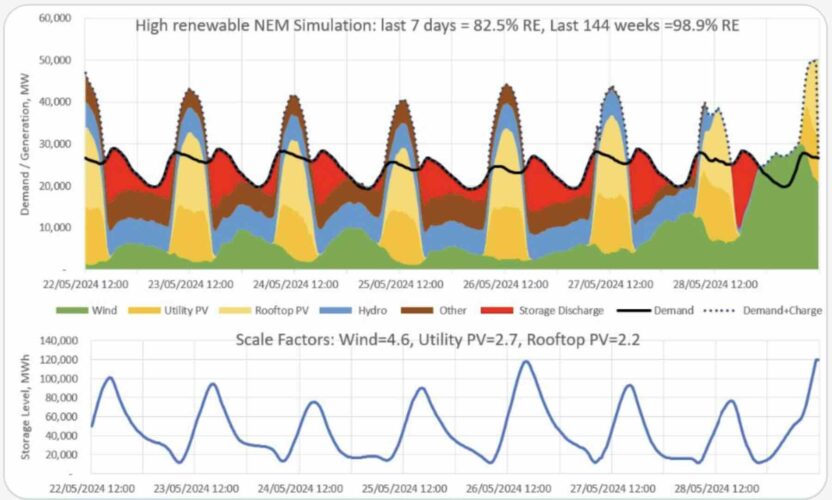
Osmond’s modelling has shown that, on average, scaled up renewables would meet 99 per cent of demand. In the past seven weeks – despite periods where wind output was some 50 per cent below average – it would still deliver 95.1 per cent of demand needs during that period.
In the last week, it fell to 82.5 per cent, the worst week by far and well below the previous record low of 89.3 per cent in June last year. Still, the maximum output from “other” sources needed to fill the gap – such as peaking gas or demand response – was 6 GW, well short of the 9GW peak in July last year.
“The last 7 weeks have seen a few very challenging weeks for my simulation,” Osmond writes on his LinkedIn page, where he usually shares the results each Wednesday, along with his X/Twitter account.
“This week in particular was the week with the greatest shortfall in renewable supply since I started the simulation.
“Weekly wind generation was about 50% below average, solar also well below average, making the combine total of wind and solar 39% below average, a record low. Demand was also 3% above average.”
He noted, as Renew Economy had done earlier this week, that the output of wind in Queensland – where one of the country’s biggest projects is currently under construction – was mostly above average this week.
That emphasises the importance of Queensland wind to a mostly renewable National Electricity Market, and for sufficient transmission to deliver that output to other states. Osmond says Queensland wind is slightly negatively correlated to wind on the rest of the NEM on a daily basis.
Based on his modelling, Osmond estimate that Australia’s main grid needs some 24 GW and 120 GWh (five hours of storage) to meet the storage needs of a grid that meets nearly all of its demand with renewables. And he says that estimate remains unaffected by last week’s wind drought.
That’s less than other assumptions, but it is fair to say that as grid and network operators, regulators, policy advisors and investors understand more about the energy transition, the need for storage – particularly long duration storage – is being constantly reassessed.
The NSW government is now considering dropping its definition of long duration storage from eight hours to four hours, following a study from the market operator that noted 96 per cent of anticipated “unserved energy” events were for less than eight hours, and 63 per cent were less than four hours.
Why spend more money on eight hour storage, then, when a majority of four hour storage would suffice? For sure, the market operator says long duration storage will be needed, but perhaps not as much as thought and perhaps not as soon as thought. And those needs might be best addressed through other more specific programs.
For a full explanation of Osmond’s modelling, and why a 96-99 per cent renewable grid is more feasible than most people realise, please read this article here.

